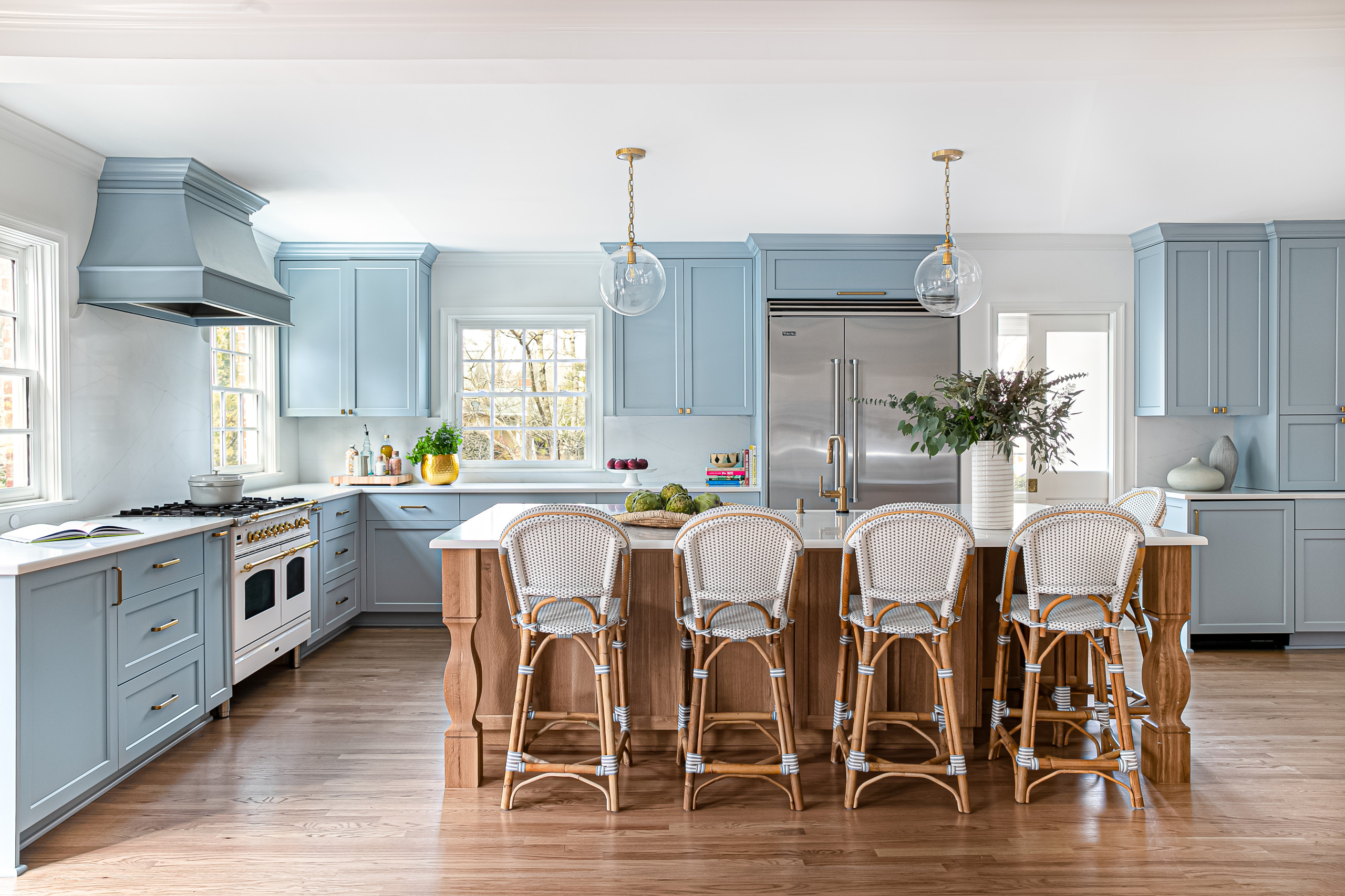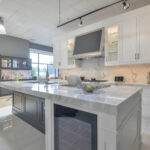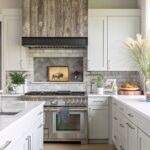There’s something magical about a room where laughter bubbles over morning coffee and memories simmer alongside family recipes. For many of us, this heart-of-the-home feeling starts with a space that balances warmth and functionality. We’ve spent years dreaming alongside homeowners like you, and we know how deeply personal it is to reimagine where life unfolds daily. Stay ahead of the curve with top kitchen remodeling trends that combine modern style with timeless functionality, making your kitchen both beautiful and practical.
2025 brings fresh opportunities to blend style with practicality. Think curved cabinetry that softens sharp corners or rich, moody hues that turn ordinary walls into conversation starters. These aren’t fleeting fads—they’re thoughtful updates designed to grow with your lifestyle.
Whether you’re overhauling your entire layout or swapping hardware for a quick refresh, our focus remains the same: helping you craft a room that works as hard as you do. From durable materials to flexible storage solutions, every choice here prioritizes longevity without sacrificing personality.
Content
- 1 Introduction to Kitchen Remodeling Trends
- 2 Evolution of Kitchen Design Through the Years
- 3 Incorporating Modern Design Elements
- 4 Deep Dive into Top Kitchen Remodeling Trends
- 5 Stylish Cabinetry and Sleek Hardware
- 6 Color Trends and Textural Contrasts in Kitchens
- 7 Innovative Kitchen Islands and Peninsulas
- 8 Creative Backsplash and Tile Inspiration
- 9 Reimagining Shelving and Storage Solutions
- 10 Optimizing Functional Zones Within Your Kitchen
- 11 FAQ
- 11.1 How have kitchen styles shifted from traditional to modern designs?
- 11.2 Why are rounded cabinetry edges becoming popular?
- 11.3 What makes integrated storage solutions “artistic”?
- 11.4 How do bold backsplash choices impact a kitchen’s vibe?
- 11.5 Are dual kitchen islands practical for smaller homes?
- 11.6 Can unconventional shelving replace upper cabinets entirely?
- 11.7 Why is zoning important in kitchen layouts?
- 11.8 What hardware finishes are trending for 2025?
- 11.9 How do color trends balance bold and neutral palettes?
- 11.10 Why choose zellige tile over standard subway options?
Key Takeaways
- Curved edges and organic shapes add warmth to functional spaces
- Bold color palettes create focal points in modern layouts
- Multi-functional storage balances aesthetics with everyday needs
- Mixed textures (think matte metals + natural wood) elevate visual interest
- Energy-efficient lighting solutions enhance ambiance and utility
Introduction to Kitchen Remodeling Trends
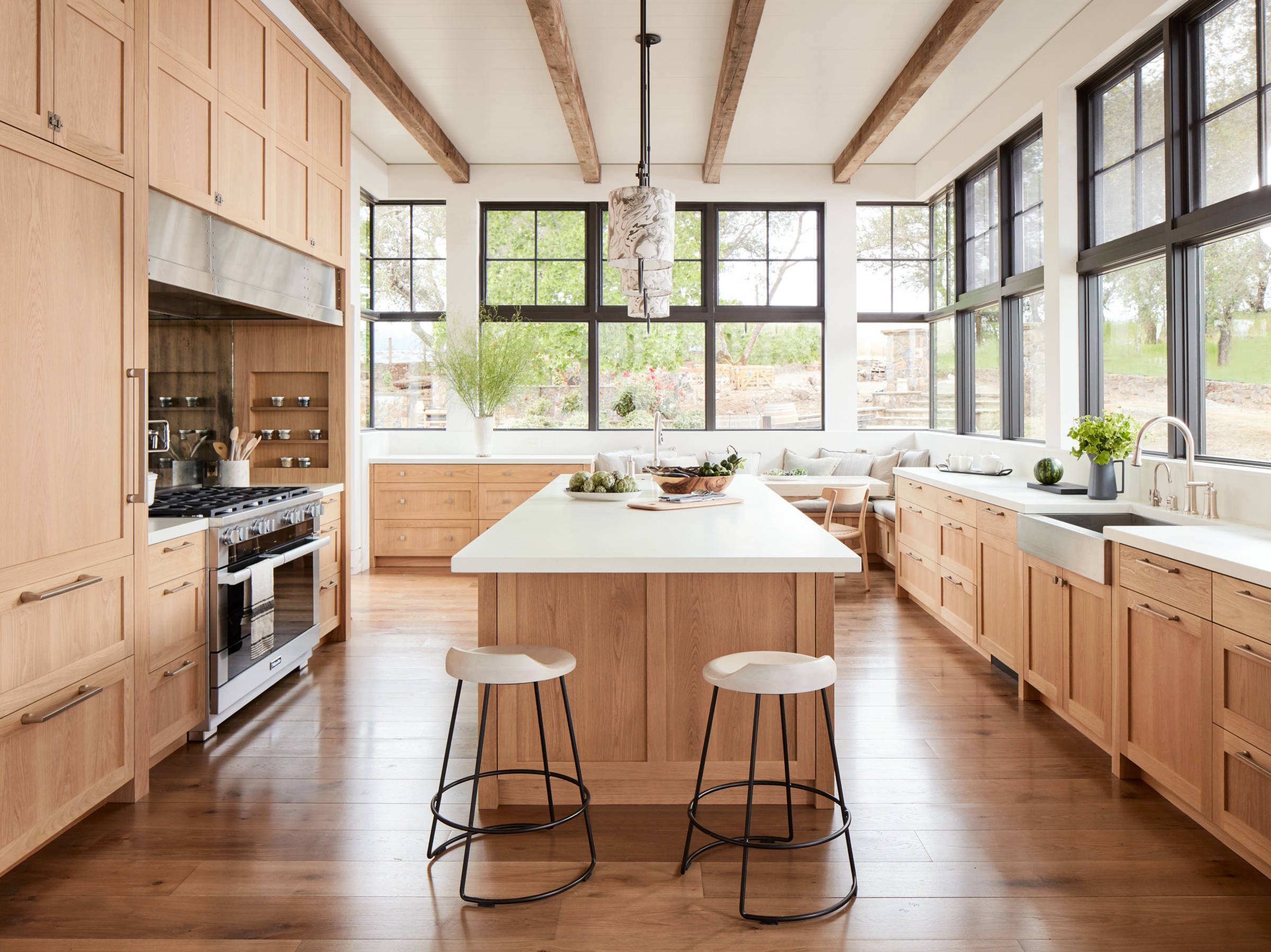
Your home deserves updates that feel like you—not just what’s trending today. We’ve seen countless spaces transformed when homeowners blend current design ideas with their unique needs. As one designer puts it:
“Treat trends like spices. A pinch adds flavor, but the whole jar overwhelms the dish.”
This year’s approaches focus on flexibility. While bold colors or curved islands might catch your eye, we prioritize elements that adapt as your life changes. For example, swapping cabinet hardware offers instant refreshment, while reconfiguring layouts requires deeper planning.
Why does this matter? Your kitchen isn’t just a space for cooking—it’s where homework happens, stories get shared, and connections grow. We guide you toward choices that enhance daily life without locking you into fleeting fads.
Remember: lasting style comes from balancing inspiration with practicality. Whether you’re drawn to earthy textures or sleek metals, your home should tell your story—not this year’s catalog.
Evolution of Kitchen Design Through the Years
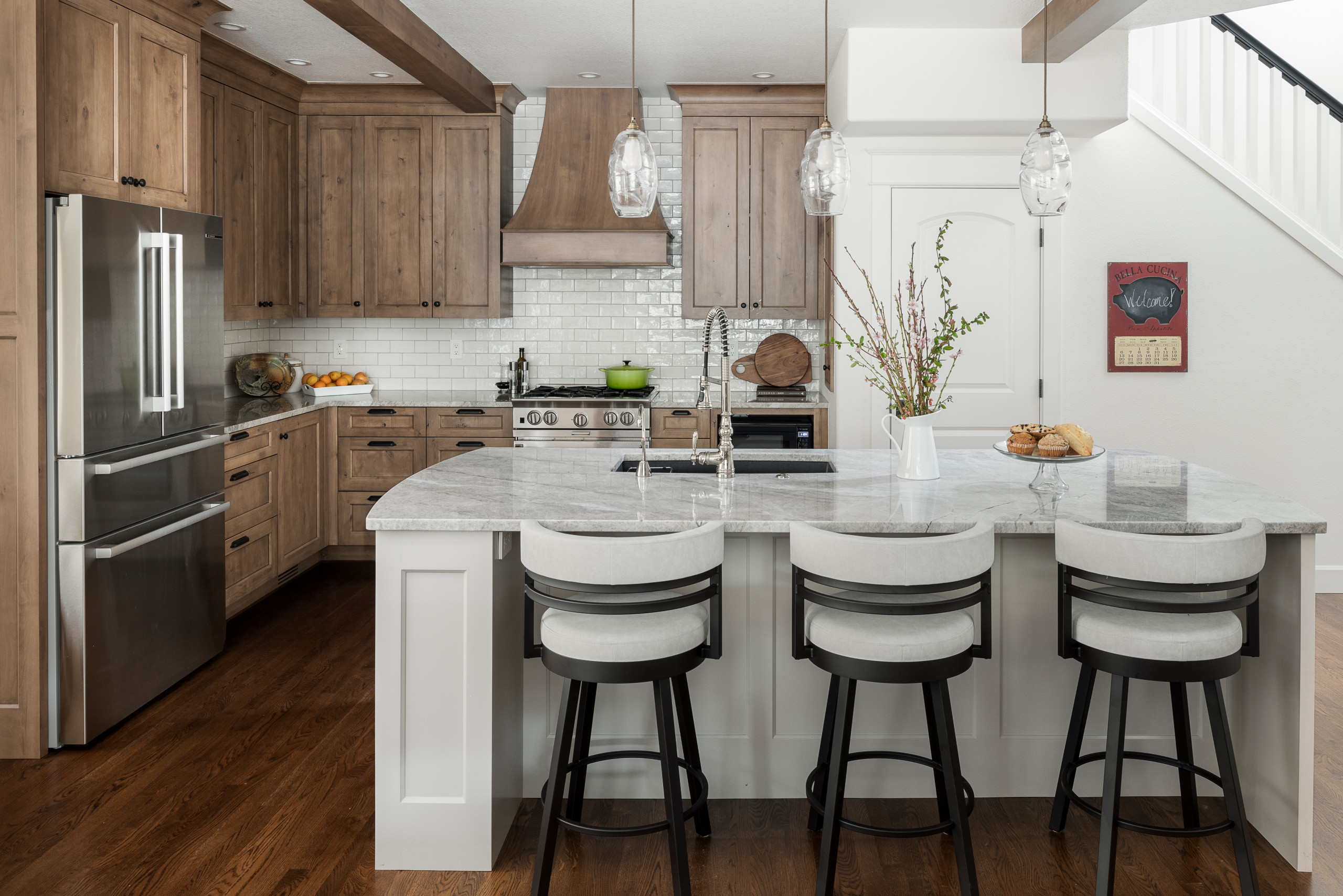
Spaces that adapt with us often become the ones we cherish most. Over generations, the way we shape our homes has shifted dramatically—especially in areas where life happens most vividly.
From Traditional to Modern
Early 20th-century kitchens prioritized utility, with closed-off layouts and minimal decor. By the 1980s, interior design began embracing open concepts, tearing down walls to connect cooking zones with living areas. This shift mirrored society’s growing focus on casual gatherings over formal dining.
Today’s layouts flow effortlessly, blending meal prep with homework stations or coffee nooks. We’ve traded sterile tile counters for warm butcher blocks, proving functionality and style aren’t mutually exclusive.
How Trends Reflect Changing Lifestyles
Our fast-paced lives demand spaces that multitask. Islands now serve as breakfast bars, charging stations, and recipe hubs—all while anchoring the room visually. It’s not just about keeping up with time; it’s about creating environments that support how we live.
Designers often remind us:
“A well-planned kitchen doesn’t follow rules—it writes new ones for the family using it.”
This philosophy drives innovations like pull-out pantries and appliance garages that hide clutter without sacrificing accessibility.
Incorporating Modern Design Elements
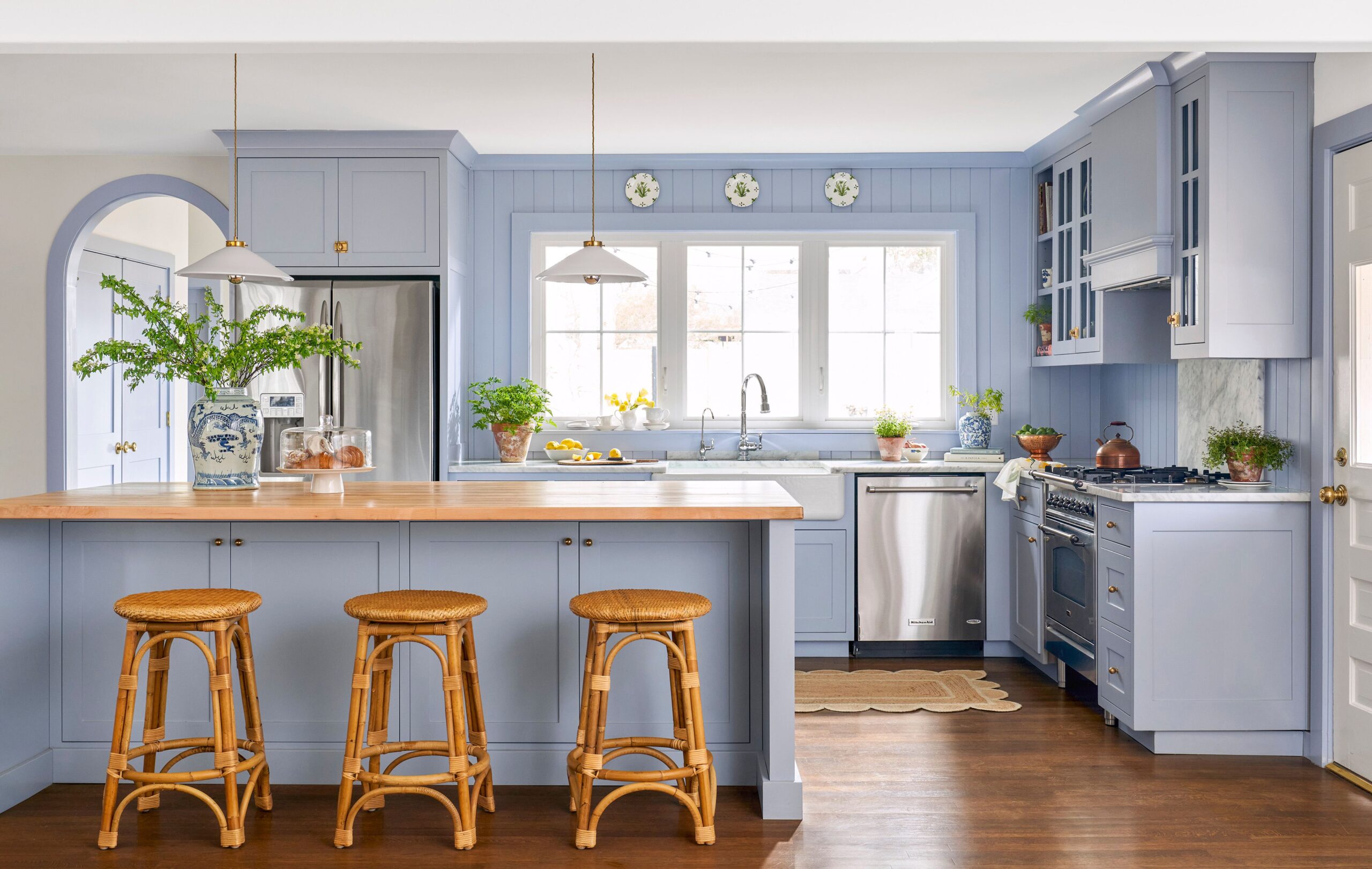
The heart of modern design lies in details that feel both fresh and timeless. We’re seeing homeowners embrace subtle curves and smart storage solutions that elevate daily living while maintaining enduring appeal.
Rounded Cabinetry for a Soft Look
Curved edges are revolutionizing cabinetry design, offering a gentle counterpoint to rigid lines. Stefania Reynolds pairs arched upper cabinets with angular marble counters, creating visual tension that feels intentional. White Studio & Co uses rounded islands to soften traditional layouts—proof this versatile approach works across aesthetics.
Integrated Storage That Doubles as Art
Hidden appliances are getting a creative upgrade. Floor-to-ceiling cabinetry now incorporates hutch-like sections with ribbed glass or fluted panels. These features disguise refrigerators while adding texture, transforming functional storage into sculptural moments.
One designer we admire puts it simply:
“Great design solves two problems at once—beauty and purpose.”
This philosophy shines through in millwork that conceals coffee stations or pull-out pantries styled like vintage furniture pieces.
The key? Ensure new elements complement your existing style. A curved cabinet shouldn’t feel like a costume—it should whisper “this belongs here” through harmonious proportions and finish choices.
Deep Dive into Top Kitchen Remodeling Trends
Effortless maintenance and striking visuals are no longer mutually exclusive in today’s homes. We’re helping families choose materials that handle spilled sauces and impromptu dance parties with equal grace—while still turning heads.
Durable Countertops and Clever Lighting
Hard-wearing surfaces like Barcelo Cream marble prove you can have luxury without constant upkeep. One contractor shared:
“This stone’s density makes it more forgiving than traditional marble—perfect for cookie-baking marathons.”
Pair these with layered lighting that adapts to your needs. Think pendant lamps over islands for ambiance, plus discreet LEDs under cabinets for chopping precision.
Innovative Backsplash Ideas
Forget predictable tile layouts. We’re loving:
- Textured cement panels with organic patterns
- High-gloss lacquer in moody jewel tones
- Metallic mosaics that catch afternoon light
These backsplash options resist splatters while adding depth. A client recently paired terracotta hexagons with brass fixtures—creating warmth that still wipes clean in seconds.
The secret? Choose elements that work as hard as you do. Whether it’s scratch-resistant quartz or dimmable lighting systems, every detail should simplify your routine while sparking joy.
Stylish Cabinetry and Sleek Hardware
The right cabinetry acts like a tailored suit—it elevates the entire space without shouting for attention. We’re seeing homeowners blend functional storage with artistic flair through details that tell subtle stories.
Millwork Accents as a Statement
Thin molding or recessed panels can transform flat cabinet doors into focal points. One designer shared:
“Millwork gives mass-produced cabinetry the illusion of custom craftsmanship—like adding crown molding to a plain dress.”
These accents work particularly well in compact areas, where vertical lines create height and depth. Pair Shaker-style frames with matte finishes for understated elegance.
Glamorous Hardware Finishes
Your drawer pulls aren’t just tools—they’re jewelry for your cabinets. Brushed brass develops a warm patina over time, while unlacquered bronze darkens with use. We love how tonal hardware (like black knobs on navy cabinets) creates cohesion without monotony.
Consider how finishes interact with light. Polished nickel reflects sunlight beautifully in morning-prep zones, while textured iron handles add grip near simmering pots. As one client put it:
“Our new pulls didn’t just update our cabinets—they gave the whole room a confidence boost.”
Color Trends and Textural Contrasts in Kitchens
Color transforms rooms like nothing else—it whispers moods, shouts personality, and bridges gaps between function and art. This year’s palettes celebrate bold choices grounded in practicality, proving vibrant hues and cozy neutrals can coexist beautifully.
Bold Accents Versus Soft Neutrals
Strategic pops of color create focal points without chaos. Imagine deep emerald lower cabinets anchoring a room, while upper shelves float in creamy beige. One designer notes:
“Treat intense shades like exclamation points—use them where you want energy to gather.”
Warmer neutrals form the foundation for these moments. Dark beige walls pair effortlessly with terracotta tiles, offering flexibility for seasonal decor swaps. These earthy bases feel lived-in yet refined.
| Color Approach | Best Use | Example Pairing | Effect |
|---|---|---|---|
| Moody Accents | Islands/Backsplashes | Brick red tiles + brass | Dramatic warmth |
| Soft Neutrals | Walls/Ceilings | Mint green + warm gray | Calming balance |
| Two-Tone Contrast | Cabinetry | Navy lowers + white uppers | Visual depth |
Blue and green tones excel as chameleon shades. Sage cabinetry reads neutral beside stainless appliances, while cobalt bar stools become vibrant accents. For those hesitant about commitment, paint colors on islands or ceilings offer low-risk experimentation.
Textures amplify these choices. Rough-hewn wood shelves add grit to smooth lacquered walls, and hammered metal pulls catch light differently than polished ones. The goal? A space that feels collected over time—not overly designed.
Innovative Kitchen Islands and Peninsulas
Islands and peninsulas are redefining how we interact with our cooking spaces. These features act as both workhorses and social hubs, adapting to everything from holiday meal prep to casual homework sessions. When planned thoughtfully, they become the functional backbone of your daily routine.
Dual Island Concepts for More Space
Two islands create a symphony of efficiency in larger layouts. Designers often recommend this approach for separating messy prep zones from clean serving areas. One client shared:
“Our dual islands let me chop vegetables while guests chat nearby—without crowding.”
This setup works particularly well with contrasting materials. Try pairing a marble-topped baking station with a butcher-block cleanup area.
Peninsula Designs as Functional Alternatives
When square footage is limited, peninsulas offer similar benefits with smarter proportions. They extend counter space while maintaining clear walkways. As one architect notes:
“A well-designed peninsula feels like an extension of the room—not an afterthought.”
| Feature | Best For | Ideal Size | Bonus Perk |
|---|---|---|---|
| Dual Islands | Entertaining | 200+ sq ft | Dedicated appliance zones |
| Peninsulas | Compact spaces | 12-18″ depth | Built-in breakfast seating |
Both solutions prioritize workflow. Leave 42-48 inches between islands for comfortable movement. For peninsulas, consider waterfall edges that turn corners into design moments rather than obstacles.
Creative Backsplash and Tile Inspiration
Tiles have always been storytellers—each piece carrying whispers of craftsmanship and intention. This year, we’re seeing surfaces become canvases for artistic expression, blending practicality with soulful design.
Zellige’s Handmade Charm
Nothing compares to the texture of zellige tiles. Their uneven surfaces catch light like windblown water, creating movement where flat paint would fall flat. One designer describes them perfectly:
“These tiles aren’t mass-produced—they’re born from human hands. Their ‘flaws’ become features that machines can’t replicate.”
We adore how clients use them:
- Rich brick red zellige wrapping peninsulas like velvet ribbons
- Emerald green tiles climbing floor-to-ceiling behind ranges
- Peach-toned mosaics adding warmth to coffee nooks
In kitchens, these tiles solve two problems at once. They protect walls from splatters while injecting personality. A recent project paired matte black zellige with brass shelves—proving even dark hues can feel inviting.
The secret? Let the tile guide your design. Cluster similar shades for subtle variation, or mix tones for deliberate contrast. As one homeowner noted:
“Our backsplash looks different every afternoon—sunlight reveals colors we didn’t notice at dawn.”
For those hesitant about commitment, start small. Frame a window with zellige borders or line a single shelf. These handcrafted pieces thrive when treated as art, not just protection against pasta sauce.
Reimagining Shelving and Storage Solutions
Shelving isn’t just about stacking plates anymore—it’s becoming the soul of how we interact with our spaces. Designers now treat storage as three-dimensional art, blending practicality with storytelling through materials and placement.
Untraditional Shelving as a Feature
Imagine floor-to-ceiling units that flow from your cooking zone into the living room like a shared sculpture. One architect recently shared:
“We’re conceiving cabinetry as full-height bookshelves that whisper ‘library’ rather than ‘pantry.’ It’s storage that disappears into your lifestyle.”
These solutions shine in open-concept homes. Glass-front cabinets display heirloom dishes beside modern cookbooks, while hidden pull-outs keep spices within reach. The magic lies in balance:
- Open shelves for curated collections
- Textured panels hiding small appliances
- Adjustable ledges adapting to seasonal decor
We’ve seen walnut-clad shelving systems double as room dividers, creating intimacy without walls. A recent project used fluted glass doors to conceal blenders, turning cluttered counters into clean lines. As one homeowner noted:
“Our kitchen now feels like part of our living space—not just a place to chop onions.”
The key? Treat every inch as an opportunity. Even narrow gaps beside refrigerators become slim pull-out racks for baking sheets. When storage design serves both eyes and hands, your space grows smarter—and infinitely more personal.
Optimizing Functional Zones Within Your Kitchen
Efficiency meets elegance when your space aligns with your daily rhythm. We help families rethink layouts by creating purposeful areas that simplify tasks while maintaining visual harmony. The goal? A room that feels intuitive to use, whether you’re hosting a dinner party or packing school lunches.
Carving Out Specific Zones for Cooking
Designers recommend anchoring your layout around key activity hubs. Position your range as the heart of a dedicated cooking zone, with ample counter space for chopping and seasoning. Keep utensils within arm’s reach but hidden behind sleek cabinetry to avoid visual noise.
Consider traffic flow between zones. Leave 42 inches between islands and appliances for comfortable movement. One client shared:
“Separating our baking station from the cleanup area cut meal prep time in half—and made the kitchen feel twice as large.”
Even compact spaces benefit from smart zoning. Use vertical dividers or contrasting materials to define areas without walls. The result? A room that works as hard as you do, blending practicality with personal style.
FAQ
Why are rounded cabinetry edges becoming popular?
Soft curves add warmth and flow to spaces that often feel utilitarian. They create a welcoming contrast to sharp angles in appliances or countertops, making the room feel more inviting and less rigid.
What makes integrated storage solutions “artistic”?
Designers now use clever storage as focal points—like ribbed glass fronts, fluted panels, or custom millwork. These details turn practical elements into visual statements, blending form and function seamlessly.
How do bold backsplash choices impact a kitchen’s vibe?
Textured tiles or bold patterns inject personality without overwhelming the space. For example, zellige tiles add subtle variation, while geometric designs create dynamic energy. They anchor the room while letting other features shine.
Are dual kitchen islands practical for smaller homes?
While dual islands work best in spacious layouts, peninsulas offer similar benefits in tighter areas. They provide extra prep space, storage, and seating without crowding the room—perfect for maximizing functionality in cozy settings.
Can unconventional shelving replace upper cabinets entirely?
Open shelving works beautifully for displaying curated items, but balance is key. We recommend combining them with closed storage to keep essentials accessible while maintaining a clutter-free look.
Why is zoning important in kitchen layouts?
Dedicated zones—like a coffee station or baking nook—streamline tasks and reduce chaos. By carving out specific areas, you create an intuitive flow that makes cooking and entertaining feel effortless.
What hardware finishes are trending for 2025?
Brushed brass and matte black remain favorites, but we’re seeing a rise in mixed metals. Pairing warm gold with cool nickel or aged iron adds depth and a custom, layered feel to cabinetry.
How do color trends balance bold and neutral palettes?
Many homeowners opt for soft, earthy bases like sage or warm beige, then introduce pops of color through accessories or accent walls. This approach keeps the space feeling fresh yet timeless.
Why choose zellige tile over standard subway options?
Zellige’s handmade imperfections and glossy finish catch light uniquely, adding organic texture. It’s a subtle upgrade that elevates backsplashes or walls without feeling overly trendy.

